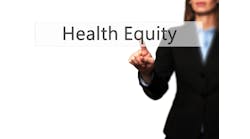As everyone knows, debates continue to rage over affirmative action programs in higher education. But one physician healthcare policy leader believes that the implications of affirmative action programs for healthcare delivery are many. Atheendar S. Venkataramani, M.D., Ph.D., an associate professor of medical ethics and health policy at the Perelman School of Medicine at the University of Pennsylvania and an attending physician at the Penn Presbyterian Hospital and the Hospital of the University of Pennsylvania, believes that those issues should be examined, on behalf of communities of color.
In a “Perspective” op-ed published online on Sep. 28 in The New England Journal of Medicine entitled “Affirmative Action, Population Health, and the Importance of Opportunity and Hope,” Dr. Venkataramani made a number of points about some of the implications of the presence or absence of affirmative action programs in higher education and their possible impacts on healthcare delivery.
Venkataramani noted that “[A]ffirmative action programs have important consequences for the health care workforce. There is growing evidence that state-level bans on the use of affirmative action in public university admissions in recent decades led to declines in the enrollment of students from historically marginalized populations in public medical schools. Lack of diversity in the physician workforce has implications for population health and health equity, as illustrated by evidence that having access to physicians from concordant racial and ethnic groups may improve trust and engagement with preventive care and, consequently, reduce premature mortality among patient populations that have long faced structural barriers to good health,” he emphasized.
He also wrote that a less-discussed “mechanism by which affirmative action programs may affect health is through the messages they send to population groups facing structural barriers. These programs — and their termination — can signal to young people about their prospects for upward mobility, their belonging in society, and the degree of systemic discrimination they may face. Such “affective” consequences — namely, the effects of policies on hope and beliefs about opportunities for upward mobility — can meaningfully shape health-related behaviors and outcomes. State bans on affirmative action were associated with large and persistent increases in adverse health-related behaviors (smoking and alcohol use) among Black, Hispanic, and American Indian and Alaska Native adolescents, including those whose college prospects wouldn’t have been directly affected by the policies.” Importantly, he wrote, “The association between affirmative action bans and smoking extended into adulthood; health-related behaviors among White students weren’t affected by these policy changes. The importance of hope and opportunity as a channel linking affirmative action programs to health and well-being is also supported by emerging evidence on the positive effects these programs can have on future-oriented behaviors, such as school attendance and academic effort.”
Venkataramani noted that, “After several states banned race-based affirmative action in university admissions, debates over affirmative action culminated in the Supreme Court’s June 2023 decision in Students for Fair Admissions v. President and Fellows of Harvard College and a concurrent case involving the University of North Carolina.” And, he wrote, “The decision in Students for Fair Admissions v. President and Fellows of Harvard College, along with evidence on the relationship between affirmative action and health, invites clinicians and policymakers to think differently about approaches to improving population health. In particular, affirmative action illustrates the critical role that opportunity for social and economic advancement plays in driving health and well-being. Opportunity shapes hopes, aspirations, and access to salutary goods and services, all of which influence health. Various other policies also influence population health through similar mechanisms, including policies that increase access to stable, well-paying jobs; policies that address discrimination and barriers to advancement faced by members of certain racial and ethnic groups, people living with disabilities, migrants, and lesbian, gay, bisexual, transgender, and queer people; policies that shape incarceration risk; and policies that bolster access to safety-net services during times of need.” Indeed, he emphasized, “Using the concept of opportunity to draw analogies across these various policy domains and populations could help ground debates about how best to intervene to improve population health and build consensus among various constituencies.”
In the end, Venkataramani wrote, “In the United States, two major challenges that have been evolving over the past four decades are worsening population health, as evidenced by drops in life expectancy in recent years, and fading economic opportunity, as evidenced by growing economic inequality. Affirmative action is one potent example that illustrates how these long-standing challenges are intimately connected: opportunity shapes health and well-being. Understanding and intervening in this fundamental relationship will be critical for addressing population health challenges moving forward.”


